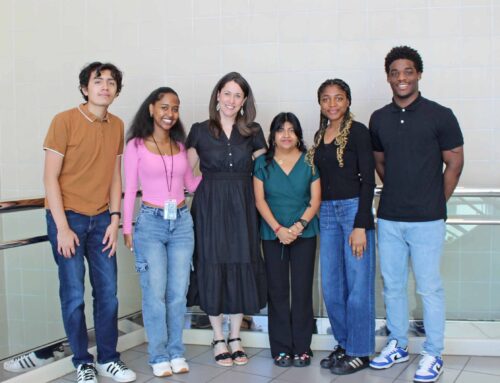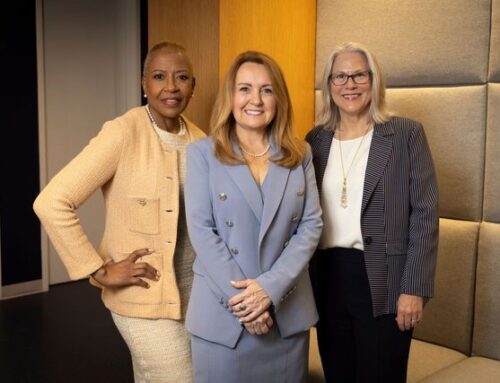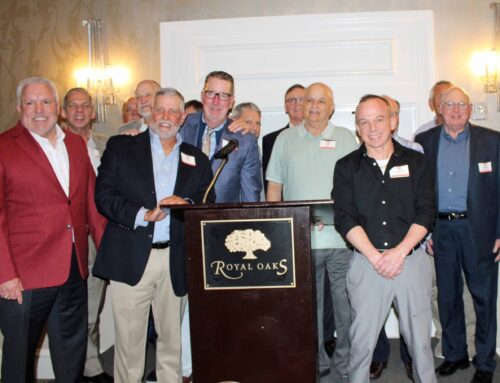In a Halloween night almost 60 years ago, 15-year-old Robert Langford was pulling what he thought was a harmless prank with friends. Suddenly, the homeowner who was the target of the prank emerged from his house with a gun.
When the echoes of the shots faded into silence, one of his friends lay dead, and Langford was left totally blind. His independence, which should have been just a few years away, was gone.
The incident, says Langford, now 74, changed the course of his life, but not in the way most people would expect.
Before, he’d been a normal high school kid: a football, basketball and baseball player who “sometimes even opened a book.” The accident, he says, “made me realize that if I was going to be part of life – more than a second-class citizen – I had to buckle down and start an academic program.”
Langford’s commitment to his studies paid off.
“I was the first blind kid to graduate from public high school in New Mexico, and the first blind person to graduate from my university, too,” he says.
He went on to earn his Ph.D., taking night classes while teaching blind students during the day. Then he served as executive director of a rehabilitation center for many years, before joining the Texas Commission for the Blind.
He retired from a successful career after raising four kids and helping hundreds of people along the way. But he still was dependent on others for the smallest of things, like reading or writing a letter or paying bills.
Until about 12 years ago.
Then, with the help of drastically improving technology, Langford’s world opened up, allowing him to do the things most of us take for granted. Using a computer and voice synthesizer that told him everything appearing on the monitor, he was able to start using the Internet, e-mail, word processors and other applications.
“For most of our lives, those of us who are totally blind have had to depend on someone else to do almost everything for us,” he says. “And here I was, being able to read, write, keep records and do things on a computer I hadn’t done for myself since I was 15,” he says.
Langford had already founded the Texas Center for the Physically Impaired (TCPI), a non-profit group that helps handicapped people find services and resources, and was operating it from his Lake Highlands home. Realizing he could further help others achieve the same autonomy he’d gained, he soon started refurbishing computers for other visually impaired people.
He began by soliciting businesses and individuals for donated computers, then recruited volunteers from North Texas PC Users Group (NTPCUG) to refurbish and equip them with voice-synthesized software for the totally blind and text-enlarging software for the partially blind.
It didn’t take long for news about the life-changing computers to spread.
“All of the sudden, people were deciding this was just exactly what they needed,” he says. “The telephone was ringing 20, 30, 40 times a day.”
Three years ago, TCPI was sending out about 100 computers a year. Langford says they’re now up to roughly 400 a year, with more than 1,250 computers shipped to date.
“We had never dreamed it would come to this,” he says. “I thought two years ago we had saturated the market. But people keep asking, and we keep sending computers out.”
For just a $100 donation to help defray costs for shipping, packaging and parts, recipients receive a turnkey computer system suited to their needs. They also receive audio cassettes and training materials that Langford prepares, teaching them how to do everything from turning the computer on to moving through the various programs and applications.
“When you’re blind, learning how to use computer is a lot of work,” Langford says. “It takes a real dedication, and some give up. But for those like me who put the effort and time into it, it’s a tremendous miracle.”
Of course, he isn’t able to do it all himself, and he’s quick to give credit to his wife Doris, the people of TPCI and NTPCUG volunteers. Lake Highlands resident Gil Brand is one of those volunteers, spending at least two days a week on the project.
Langford is “just an incredible person,” Brand says. “He’s a little ball of energy. He coordinates the receipt of donated computers, does the advertising, handles the requests and screens them, then we put them together and send them out.”
Most of the computers are sent to people in the United States, but Langford and his volunteers are willing to help anyone, anywhere. They helped start a computer center for the blind in Chile a few years ago, after a woman there contacted them seeking help for her grandson. Langford and his wife even traveled to Chile for the dedication, which turned into a huge community event.
Word then traveled to Peru, where there are now similar computer centers, and to other parts of the world. They’ve shipped computers to Sierra Leone, Romania and Nigeria, and they hope to send more into Kenya, Honduras and Nicaragua.
A lot to handle, but Langford shows no signs of slowing down.
“I spend six to 10 hours a day on the computer or on the phone,” he says. “I start at 6 or so every morning, and by the time I do all my e-mail, pay bills and keep records, then the telephone starts ringing. It gives me a tremendous amount of satisfaction. And it keeps me out of mischief.
“So many retired people find life boring, but I certainly don’t. Every day I just can’t wait to get started.”
For information about computers for the blind and Texas Center for the Physically Impaired, visit www.handicapability.org or call 214-340-6328. For information about North Texas PC Users Group, visit www.ntpcug.org.





